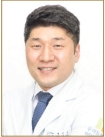Recently, we have been surprised to figure out that the dramatic change in the reputation of endoscopic spine surgery has been taking place rapidly, and also tons of articles are coming out, especially from China, Korea, and other countries. However, the unfamiliar equipment, not handy optics, the narrow surgical field afforded by endoscopic spinal surgery, and eventually, steep learning curves have deterred many surgeons from this endoscopic spine surgical field. Overcoming the learning curve is a major barrier to entry in endoscopic spinal surgery [
1,
2]. In particular, since the transforaminal endoscopic approach is a new treatment method having a different surgical trajectory compared to that of the traditional surgical method, any novice surgeon who starts this surgery for the first time needs a 3-dimensional understanding of the neural foramen related to Kambin triangle.
In general, it is mentioned that endoscopic surgery requires a steep learning curve. More heuristic learning is needed than that of conventional spine surgery. Many researchers studied the learning process of endoscopic surgery and made presentations on how much surgical experience is needed until the surgery has uniform outcomes according to each criterion and goal [
3-
8]. As such, most of the existing studies have an explicit limitation in suggesting the cutoff values of the initial 20 cases through comparison between random groups dichotomized based on the operation time.
In this issue, Gadjradj et al. [
9] present a clear objective to evaluate the learning curve. The objective structured assessment of technical skill was proposed as a tool to evaluate surgical residents with 8 specific items [
10]. However, this study showed that it could also be used to evaluate the skills of endoscopic surgery. The interesting thing about this study is that ‘time and motion’ showed the most development, followed by ‘Respect tissue’ and ‘Knowledge and handling of Instruments.’ This means that the operation time will gradually decrease as experience is accumulated, and unfamiliar instruments and other types of surgical anatomy can also show a lot of progress through experience. As a more specific endoscopic surgery learning object, the 10-time specific list makes it possible to subdivide each stage of endoscopic surgery and check whether it is performed. It seems necessary to change depending on the surgical technique, but it will be useful to set a specific checklist and identify where the trainee is in the learning process by distinguishing between ‘performed,’ ‘inadequately done,’ and ‘not done.’ When viewed in this way, differences in the degree of completion of surgical techniques were also confirmed for each individual in the first 5, 10, and 15 cases. This study is important because it is more apparent than the evaluation based on the operation time or complications, and both the trainee and the supervisor can evaluate objectively. In another paper by the same authors [
11], learning curve surgeons trained in the same way showed lower performance than expert surgeons in the first year of operation time and recurrence rate but reported results that were comparable in patient satisfaction and progress. This suggests that endoscopic surgery can achieve reproducible and stable results even for beginners when well-trained and educated.
Contrary to a study of the learning curve for beginners on transforminal endoscopic lumbar discectomy (TELD), Yuan et al. [
12] report a study on extended indications of TELD. Hard discs or calcified discs have generally been regarded as a relative contraindication [
13], and posterior apophyseal ring fracture is similar. However, the authors reported successful surgical results through sophisticated dissection and removal of fractured bone fragments. Although the probability of complications is higher and the operation time is longer than that of general TELD, it is a meaningful study in terms of expanding the indications of TELD as a minimally invasive surgical method for rare but difficult-to-treat lesions.
A learning curve is not an achievement curve. Just because the surgical technique has settled on a plateau at the initial stage of starting surgery cannot be evaluated as a completed technique. Due to the nature of the surgical method that varies according to the various indications of the transforaminal endoscopic approach, the learning curve has a different start. Therefore, in addition to the surgical technique in the learning curve, it will be necessary to comprehensively evaluate the difficulty of indications, acute recurrence after surgery, and readmission.
With endoscopic surgery receiving more and more attention, proper guidelines and goal setting for education and training are more important than ever. Based on the detailed checklist presented in this study, it is necessary to discuss creating a consensus between endoscopic academic societies and experts.







